Libros en exoticindia.es
Historia
Historia (1446)
!
A
- A Vedic Reader for Students
- Adhyatma Ramayana (Sanskrit Text with Transliteration, English Commentary Alongwith Explanatory Notes, Relevant Appendices etc.) (In Two Volumes)
- Agni – The Vedic Ritual of the Fire Altar (Set of 2 Big Volumes with Two CDs)
- Ajanta - Monumental Legacy
- An Introduction to Indian Philosophy
- Apologetic Brahma Seeks Pardon from Krishna (From ...
- Arthaveda Ka Subodh Bhashya (Part Second - Kanda: 4 to 6): Sanskrit Text and Hindi Translation
- Arthaveda Ka Subodh Bhashya (Part Third - Kanda: 7 to 10): Sanskrit Text and Hindi Translation
B
- Beloved of the Gods (A Story of Ashoka the Great)
- Brahmavidya Abhyasa (Sure Way to The Inner Self)
- Buddhism In Comparative Light
- Buddhism in South India
C
D
- Dharmakosa - Rajanitikanda (Sanskrit Only in Six Volumes): The Most Voluminous Encyclopedia on the Ideals of Indian Politics
- Discovery of Truth Immortality
- Discover Vedic Mathematics
- Divine Messengers of Our Time The Doctrine of Recognition (Pratyabhijna Philosophy): A Rare Book
E
F
G
- Ganesa (Ganesha) In Medieval Nepal
- Glimpses of a Golden Childhood: The Rebellious Childhood of a Great Enlightened One
- God Word Volume II - Sri Ganapati Sachchidananda Swamiji
- God Word Volume III - Sri Ganapati Sachchidananda Swamiji
- Great Saints of South India
- Guru Arjan Dev
H
I
- Illustrated History of India
- In Quest of the Buddha: A Journey on The Silk Road
- In the Mirror of Memory (Reflections on Mindfulness and remembrance in Indian and Tibetan Buddhism)
J
K
- Kalpa-Vedanga: Origin And Development
- Kathakali The Sacred Dance Drama of Malabar
- Kishkindhaa-Kaanda (Descent Four) Shree Raamachari...
L
M
N
O
P
R
S
- Sachitra Arati Sangraha (Text in Roman): Illustrated Throughout in Color
- Samaveda: (Sanskrit Text and Hindi Translation)
- Saraswati
- Seven Hundred Sayings of Sachchidananda
- Shiva-Parvati
- Shiva and Shakti in Indian Mythology
- Shiva Shakti Aaraadhanaa (Worship of Shiva and Shakti): With Roman Transliteration
- Shree Hanumaana Baahuka (With Aaratee, Sankatamochana Hanumaanaashtaka and Bajaranga Baana): Original Text, Transliteration and Translation
- Shree Satyanaaraayana Vrat Kathaa (In English & Hindi)
- Sister Nivedita A Passion for India - La Hermana Nivedita, Una pasión por la India
- Sivastotravali of Utpaladeva
- Sri Bhagavatarka Marici-Mala (A Garland of Rays from the Sunlike Srimad Bhagavatam): Transliterated Text with English Translation
- Sri Ganapati Sachchidananda Swamiji – A Glimpse (With Audio CD)
- Sri Tantralokah (Volume Three): Sanskrit Text
- Srimad Bhagavatam – Sarartha Darsini Commentary by...
- Srimannarayaneeyam with English Version of Bhaktarnjini Malayalam Commentary (In Three Volumes)
- Srimad Valmiki-Ramayana (With Sanskrit Text and English Translation) (Two Volumes)
- Studies in Indian Sculpture (Regional Genres and I...
- Sundara-Kaanda (Original Text, its Romanization En...
- Super Science of Yoga
T
- Teaching Tradition of Advaita Vedanta
- Temples of Trssoor District (Kerala): A Rare Book
- Temples of Palakkad District (A Big Book)
- The Early Cultural Relations of India and Iran
- The Eighty-Four Hymns of Hita Harivamsa – An Editi...
- The Goddess of Prosperity - Lakshmi
- The Himalayas and The Himalayans: A Rare Book
- The Holy Cow and Other Indian Stories
- The Krsnagiti of Manaveda (Sanskrit Text with English Translation): A Rare Book
- The Logic of Spirituality (With DVD)
- The Mandukya Upanisad And The Agama Sastra: An Investigation Into the Meaning of The Vedanta
- The Naradasmrti
- The Painted Towns of Shekhawati
- The Philosophy of the Vedanta and the Vedantasara
- The Puspasutra – A Pratisakhya of the Samaveda (In Two Volumes): Sanskrit Text with English Translation
- The Ramayana
- The Ramayana of Tulsidas (Text with English Translation in Verse)
- The Splendour of the Supreme Mother: Devi Bhagavatam (A Compact Condensed Prose Narrative)
- The Srimad Devi Bhagavatam 2 parts (bd.in 1)
- The Taittiriya Upanishad: With the Commentaries of Sri Sankaracarya, Sri Suresvaracarya and Sri Vidyaranya
- The Temple Architecture of India
- The Treasury of Good Sayings (A Tibetan History of Bon)
U
V
- Vedanga Literature (Auxiliary to the Vedas)
- Vedic Physics – Towards Unification of Quantum Mechanics & General Relativity
- Vishvavallabha (Dear to the World: The Science of Plant Life)
- Visvamitra In Vedic And Post Vedic Literature (A Rare Book)
W
Y
Z
PURANAS
- The Brahmanda Purana: 5 Volumes (Ancient Indian Tradition & Mythology Volume-22-26)
- BRAHMA PURANA: 4 Parts (Ancient Indian Tradition a...
- The Ganesa Purana (Sanskrit Only)
- THE GARUDA-PURANA: 3 Volumes (Ancient Indian Tradition and Mythology)
- THE PADMA PURANA (English Translation in Ten Volu...
- Purana Purusha - Yogiraj Sri Shama Churn Lahiree
- The Siva (Shiva) Purana (English Translation) 4 Vo...
- The Skanda-Purana: (English Translation in 22 Volumes)
- THE VARAHA PURANA: 2 Parts (Ancient Indian Tradition and Mythology Series, Vol. 31-32)
- THE VAYU PURANA: 2 Parts (Ancient Indian Tradition & Mythology Vol. 37-38)
- The Visnu (Vishnu) Purana: A System of Hindu Mytho...
ARTÍCULOS Y ANEXO
----- Original Message -----From: Exotic IndiaTo:Sent: Tuesday, April 19, 2011 12:30 PMSubject: Durga: The Adi-Shakti
Durga: The Adi-Shakti
Article of the Month - April 2011
Goddess DurgaDurga, the most highly worshipped goddess of Indian masses held in alike reverence in all sectarian lines, even Buddhist and Jain, in her form as Durga or in one of her many transforms - the ferocious Tara of Buddhists or the nurturing mother Ambika of Jains, is the ultimate of divine power capable of eradicating every evil and every wrong, and nurturing and sustaining life in whichever form it exists. Not a mere epiphenomenal expansion of a visual culture that the Indian land is known to have now for millenniums, or a disembodied divine authority sustaining in believing minds, Durga is perceived as a dynamic presence with a form, or rather in any form engaged in eradicating the dark and everything adverse to life and sustaining good and righteous.
The term 'Durga' brings to mind a multi-armed lion-riding divinity that on one hand is possessed of rare feminine beauty and imperishable youth, and on the other, carries in her hands various instruments of war and on her face the determination to avenge her devotee's tormenter and punish a wrong-doer, and all combined with a unique quiescence and confidence as if triumph is the foregone conclusion of all her battles against evil. The Puranic tradition inclines to venerate Durga as just one of the names of Devi, the cosmic Divine Female who created, sustained and destroyed. Despite such preference of the Puranas for the term 'Devi' for defining the overall vision of the cosmic Divine Female even initially Durga acquires among Devi's other manifestations a distinction denotative of a class which is not the same as epithets like Jagad-mata, Jagadamba, Vishveshwari, or whatever. The term Durga brings to mind a specific image which these epithets do not, perhaps because they are used with some kind of commonness for Devi's all forms.
Durga: Vishnu's Shakti
The Devi-Mahatmya in the Markandeya Purana, a fifth-sixth century text (though with his presence on many occasions alluded to in the Mahabharata the date of sage Markandeya seems to be much earlier; maybe, Markandeya was the common appellation of the sages in the line, not the name of an individual sage, or in view of his timeless contribution the name of sage Markandeya was subsequently added), perceives the aggregate cosmic energy as Mahamaya: Vishnu's 'shakti' that the text defines as Devi manifesting in three aspects, viz., Mahalakshmi, Mahakali and Mahasaraswati, having different forms and appearances but a common objective of avenging the wrong-doer. This in the Mahabharata like early texts and sculptures of the early centuries of the Common Era is the Durga's role. Quite significant as it is, the Devi-Mahatmya uses the term 'Durga', as it uses the term 'Devi', in its all sections devoted to either of Mahalakshmi, Mahakali and Mahasaraswati, which indicates that these are as much the Durga's manifestations, as they are the Devi's. The text perceives Devi primarily as the redeemer of 'durgam' - the most difficult, a situation, act, or objective, and hence, Devi is Durga - the redeemer of 'durgam', in her every aspect.
Durga Bijam: Durga the 'Seed'
The text is full of expressions that are denotative of the Durga's supreme divinity, such as 'Durgam jayakhyam', that is, victory is her other name, or 'Durgasi Durgabhawasagaranaurasanga', that is, Durga is the boat that takes across the cycle of birth and death; the one, that is, Durga as victory is the ultimate of all worldly acts, and the other, that is, Durga as 'Tarini' - redeemer from the cycle of birth and death is the ultimate of every spiritual endeavour. In the 'Viniyoga' - the fore-verse or the introductory couplet of the second Canto, the Devi-Mahatmya asserts this supremacy of Durga metaphysically too. It alludes to Durga as 'Durga bijam', that is, Durga, the seed. 'Bija' is a widely used term in Sanskrit for defining the 'essential root' from which a form evolves. All major 'Mantras' - mystic syllables, or hymns pregnant with mystic powers, have their 'bija-mantras', their essential pith out of which the related mantra's body evolves. Accordingly, the term 'Durga bijam' suggests that the text perceives Durga as the basic essence of the Devi's all manifestations. Thus, the Devi-Mahatmya might be seen as considering Devi and Durga as one, and this same reflects in most of the commentaries of the Devi-Mahatmya part of the Markandeya Purana that have often preferred calling this section of the text as 'Durga-Saptashati'.
Durga's Antiquity:
As regards her antiquity Durga is an entity beyond time. Even the Markandeya Purana that identifies Mahamaya - Devi's proto form, as Vishnu's 'shakti' contends with specificity that it was her who gave to Vishnu, as also to Brahma and Shiva, their forms. This statement has two implications, one that she preceded not only Vishnu but the great Trinity, and the other, that she was Vishnu's 'shakti' by invocation and by her favour, not by Vishnu's authority. Thus, by whatever name, the Great Goddess preceded all forms, their creator, sustainer and destroyer, the time that spanned them and the space where they evolved. Ironically, sage Markandeya sought to subordinate her to Vishnu as his 'shakti' but overwhelming him, or rather the entire Trinity, the goddess bowed them to her subordination. In the tradition gods, even Trinity, are often seen bowing to her in devotion but Durga is never seen bowing to any, divine or demonic, justifying her name 'Jaya'.
Obviously, the scale of time is not Durga's scale. It is only the date of her earliest appearance in a medium, text, or iconography, by which her antiquity is determined. When in the eleventh Canto of the Devi-Mahatmya Devi declares that in the twenty-eighth eon of Vaivasvata Manvantara she would incarnate and kill the demon Durgam and assume Durga as her name, sage Markandeya does not suggest the period of Durga's emergence as posterior to the period of his text. The concurrent age is Vaivasvata Manvantara but it is only by very complicated astronomical calculations that one can know when exactly its twenty-eighth eon passed, perhaps millions of years ago, and hence, it is not known when Devi assumed Durga as her name. Thus, mythically the Great Goddess manifested as Durga in the twenty-eighth eon of this Manvantara, but it is simply a period beyond human calculation.
Durga: The Initial Manifestation of Devi
Thus, Devi had in any medium or tradition her earliest manifestation as Durga. It seems that the Devi's form as Durga, a goddess of battlefield always in action, as nurturing mother or as avenging warrior engaging in battle one demon or other, has been conceived in stark contrast to the passive non-operating votive image of the Mother Goddess of Indus settlements, and the nature-deities of the 'Yajna' of the Rig-Veda, perhaps around the same time when the other two cults were in greater prevalence. Excavations of Indus or Harappan sites reveal no signs of a warrior goddess, and barring a few contentions, such as makes S. K. Ramachandra Rao who contends in his Durga-Kosha that Durga is one of the goddesses that the Rig-Veda enumerates, broadly Durga is not considered a goddess from the Rig-Vedic pantheon. Whatever the merit of such claims and counter-claims in regard to Durga's position in the Rig-Veda, there is absolute unanimity in regard to Durga's presence in the Mahabharata, the great epic datable broadly to sixth-fifth century B.C.
Durga in the Mahabharata
It seems that by the period of the Mahabharata not only Durga was a popularly invoked deity but also had a body of hymns, and perhaps some shrines and some kind of imagery too, dedicated to her. The Mahabharata lauds Durga, by her name as Durga, not Devi, as Tribhuwaneshvari - the goddess that ruled all three worlds. Though the Mahabharata does not use the term 'durgam', which is repeatedly used in the Devi-Mahatmya comprising the primary contextual basis for her name as Durga, in the Mahabharata too, the Great Goddess is commemorated in situations which are 'durgam'. The Mahabharata does not confound Durga with Devi as the Devi-Mahatmya seems to sometimes do. The great epic alludes to her in all clarity and with absolute distinction as 'Devim Durgam Tribhuwaneshvari' - goddess Durga, the ruler of three worlds, and at another place, as 'Parajayaya shatrunam Durgastotra mudiraye' - commemoration of Durga Stotra defeats enemies.
As stipulated between them and Kauravas, the Pandavas were required to pass the thirteenth year of their exile in complete concealment without being seen and identified, a really difficult situation. They decide to disguise as cook, tutor, attendant etc. and seek jobs as the household servants of king Virata, the ruler of Matsya-desha. Before they enter the city of Virata, Yudhishthara along with his brothers commemorate 'Devim Durgam Tribhuwaneshvari', obviously for the accomplishment of their errand. Again, just when the Great War is in the offing and the forces of Kauravas and Pandavas are arrayed in the battlefield, Krishna commands Arjuna to commemorate with pure heart 'Durga-stotra' - hymns dedicated to Durga, for 'Parajayaya shatrunam', that is, for the defeat of the enemy. Arjuna commemorates Durga and then she appears in the sky and grants Pandavas the boon of victory. In 'Devim Durgam Tribhuwaneshvari' the Mahabharata uses the term 'Devim' as Durga's defining epithet, not like the Devi-Mahatmya where 'Durga' is Devi's epithet. Notably, it is Krishna, Vishnu's incarnation, who perceives in Durga the ultimate power, obviously even beyond Vishnu, to defeat enemies.
Durga in Early Sculptures: The Universal Mother and Ultimate Protector
Durga's priority as the Devi's principal manifestation reflects more powerfully in sculptures of the early centuries of the Common Era. Durga, multi-armed, as also normal two-armed, carrying various weapons in her hands and sometime crammed into her coiffure, is with absolute clarity the goddess of battlefield.
As suggest a good number of her sculptures that have along her icons a buffalo figure, elimination of Mahishasura, the buffalo-demon, was not only her exploit but the legend seems to have been more popular than others. This Devi-form, avenging tormenters and wrong-doers, was essentially the ultimate goddess of battlefield and represented iconically the Mahabharata's Durga who ruled all three worlds and defeated enemies in the battlefield.
The Durga icons from around the fifth-sixth centuries record a significant departure in the iconography of the goddess. The goddess is seen still carrying in her hands the instruments of annihilation, but is also seen carrying in her left arm a child. Prof. Pratapaditya Pal has rightly perceived it as the phase when the avenging Goddess had synthesized into her being also the 'nurturing Mother': The absolute vision of Durga, the Universal Mother and the Ultimate Protector.
Durga Around Sixth Century
This form of Durga seems to have fully concretized when sage Markandeya composed his poem 'Devi-Mahatmya'. Perhaps for greater dimensional breadth or for unity between different sectarian groups sage Markandeya first alternated Durga with Devi, a far more inclusive and somewhat abstract term, and then split her form into her three manifestations: Mahalakshmi,
Mahakali
and Mahasaraswati,
all multi-armed, all carrying in their various hands instruments of destruction, and all conceived with large breasts full of milk and motherly attributes, representing Durga's warlike bearing as also her motherhood. These new forms, viz., Mahalakshmi, Mahakali and Mahasaraswati, were more in line with the 'Tri-murti' cult.
The Rig-Veda talked of Vak, or Saraswati, and Shri, another name of Lakshmi, and excavations have revealed signs of a ferocious divinity being worshipped by Indus settlers. However, the Devi-Mahatmya's models of Mahalakshmi, Mahakali and Mahasaraswati were different from both. Mahalakshmi and Mahasaraswati seem to have been modeled after Durga, and Mahakali, is textually too, a transform of the principal goddess of the battlefield, Devi or Durga.
Thus, Devi or her manifestations, Mahalakshmi, Mahakali or Mahasaraswati, are Durga's forms, and Devi is merely her defining epithet as is Devata of the male divinities. The term 'Devata' does not denote a specific divinity because of such Devatas' plurality. Devi's singularity makes the term 'Devi' synonymous to Durga. Even in Puranic tradition the Devi's Mahalakshmi, Mahakali and Mahasaraswati manifestations seem to have failed to long retain at least their Durga-like martial role. Mahalakshmi, as Lakshmi and Mahasaraswati, as Saraswati, shed finally their warlike bearing and join Lord Vishnu's and Brahma's households with roles completely different from what they had in their proto Mahalakshmi and Mahasaraswati forms.
On the contrary, Durga's form explodes to variously manifest, even in subsidiary forms like Matrikas and Mahavidyas: all the forms of battlefield.
Her tender aspect as Parvati,
and ferocious, as Kali,
accompany Shiva as his consorts, one completely dedicated, and other, moody, unpredictable and dominating, perhaps as suited Shiva's two major aspects, 'lalita' and 'Bhairava'. Whatever about the early prevalence of the cult of a Kali-like ferocious goddess, the earliest known allusions to Parvati are from the Puranas, though in a brief span, from around seventh century onwards, there crops up not only a huge body of myths but also her numerous icons mostly representing her as engaged in 'panchagni-tapa' - performing penance in the midst of five fires.
Durga, Her Name
As already discussed, Durga, a dynamic and militant goddess, had emerged in theology by at least the sixth-fifth century B. C. As suggests 'Parajayaya shatrunam Durgastotra mudiraye', people around the period of the Mahabharata invoked her by reciting her 'stotra' - commemorative verses. It indicates that Durga was by then an established deity and had devoted to her a body of commemorative hymns and perhaps a few other texts, and was invoked for defeating one's enemy. Notably, in the tenth Canto of the Devi-Mahatmya, while confronting the Goddess, Shumbha, the demon chief, cries in fury 'Balawalepadduste twam ma Durge garwamavaha' - O ye wicked Durga, thy power, thou art proud of, is false. It is well settled that in fury, or any kind of emotion, the mind bursts with words which are its most natural idiom. Obviously, Shumbha uttered Durga's name instinctively as if he used it in routine.
As regards her name as 'Durga', the Devi-Mahatmya makes two propositions. It emphasizes more on the Devi's power to redeem her votaries from 'durgam' that she got 'Durga' as her name: almost an epithet extolling her role. In the eleventh chapter of the Devi-Mahatmya Devi herself announces her emergence at a given time when she would kill the demon Durgam and assume Durga as her name. Though redeemer of 'durgam' - a difficult situation, or 'durgati' - a great misfortune, which some texts consider the basis for her name as Durga, ever continues to be Durga's role, annihilation of demon Durgam and hence Durga her name is more often the contention of the later texts and theological tradition. The simple allusion to demon Durgam in the Devi-Mahatmya is expanded into a body of fully grown myths. They not only add to the legend a dimensional breadth but also come out with details of Durgam's demonic acts and lineage, some linking him with Ruru's clan, and other with Dhruta's and Hiranyaksha's. It is, however, unanimously contended that Durgam sought to destroy the Vedas, and that Devi had killed him for such act of him, and this gave her, her Durga name. Some texts contend that she was protector of 'durgas' - forts, and hence her Durga name.
Origin of Durga As Devi : Adi-Shakti
In regard to the origin of Durga or Devi there prevail two traditions, one that venerates her as Adi-Shakti - primordial cosmic energy, suggestive of her presence when the Creation had yet to take effect and ever before and after, and the other, suggestive of her creation out of gods' divine attributes for accomplishing an objective.
As has the Puranic tradition which culminates in the Devi Bhagavata, millions of years after the Great Deluge, and all forms, except the all-encompassing ocean and abyssal darkness, perished, floating on a banyan leaf on the surface of the ocean of milk there emerged Vishnu as child known in the tradition as Bala Mukunda. Bewildered he looked around and his mind questioned, 'Who am I?', and 'Who created me and what for?' When wrestling with a volley of questions from within, Vishnu heard an ethereal voice that announced : 'Sarvam khalvidamevaham, Nanyadasti sanatanam', that is, 'All that is, I am, there is nothing eternal but me'. Soon after, Vishnu had in his vision the form of a lustrous youthful four-armed female divinity carrying a conch, disc, club and lotus, and clad in divine costume and ornaments, and with twenty-one celestial powers in attendance. Vishnu instantly realised that she was the Adi-Shakti, Devi, and paid her homage. She revealed to Vishnu his identity and role. According to this tradition, Durga, the Adishakti's initial manifestation, preceded time and all forms, and had manifestations, not birth or origin.
Devi, Created Out of Gods' Attributes
The other tradition, and more akin to public mind, relates to her emergence for killing Mahisha, a buffalo demon by name and appearance. He was born to the demon king Rambha of his buffalo-wife. Rambha was a Shiva-devotee. The childless Rambha, by long rigorous penance, pleased Shiva who granted him the boon that he would be born to him as his son. On way-back Rambha was fascinated by a she-buffalo's beauty. He married her and Mahisha was born. As this tradition has it, Mahisha was part of Shiva. By his great penance Mahisha won from Brahma the boon of invincibility against all male. With this boon he grew highly ambitious and arrogant, as also atrocious and cruel. He grabbed the entire earth and also invaded heaven and defeated Indra and all other gods forcing them to flee. Gods approached Brahma and knew from him about Mahisha's boon of invincibility against all males and that, if ever, only a female could kill him. Gods, theirs' being a male world, felt helpless. On Brahma's advice they went to Shiva, and finally to Vishnu and after due deliberations Vishnu suggested that with their aggregate divine lustre they should create a female power to kill Mahisha.
Lord Vishnu had hardly finished when from Brahma's body burst a rare lustre, red as ruby, which was both, hot and cold; from Shiva's body there exploded a burst of white bright rays, as brilliant as diamond; similar brilliance burst from Vishnu's body, blue as blue sapphire; from the bodies of Indra, Varuna, Kuber, Yama, Agni and other gods also burst similar lustre, which all combined and soon transformed into an eighteen-armed youthful woman possessed of astonishing beauty, rare feminine grace and divinity such as had never enshrined a female form. A form for battlefield, she also represented the absolute womanhood on earth. Her face was formed by the powers of Shiva, hair, by Yama's, all eighteen arms, by Vishnu's, breasts, eye-brows, ears, nose, teeth, fingernails, waist, thighs and ankles, buttocks, toe-nails, feet, eyes, respectively by the powers of Moon, Twilight, Vayu, Kuber, Prajapati, Vasu, Indra, Varuna, Earth, Brahma, Sun, Agni.
On Vishnu's instance gods gifted to her their ornaments and clothes as also weapons and other attributes. Kshirasagara - ocean of milk, presented to the goddess imperishable clothes and precious jewels, Shesh, a necklace inlaid with celestial gems glistening like crores of suns, Varuna, a garland of lotuses that never faded, and a noose, and Himavana, his lion for her mount. Vishnu replicated a disc from his and offered it to the goddess. Alike, Shiva replicated and gave her his trident, Varuna, his conch, Agni, his 'shakti', Vayu, his bow and quiver full of arrows, Indra, thunderbolt and bell, Yama, 'danda', Brahma, 'kamandalu', Kala - Death, sword and shield, Vishvakarma, his battle-axe and other divine powers, their respective attributes : mace, armour, gold-pot full of honey etc. Finally, gods extolled the goddess by various epithets and hymns and prayed with folded hands to kill arrogant Mahishasura, their tormenter and restore to them Indraloka and their power.
Durga: Mahishasura-Mardini
The Goddess delightfully accepted the prayer. With a thunderous roar that rocked the earth from one end to other she proceeded to battlefield. Hearing the roar and taking it as some kind of threat Mahisha with his army and all demon warriors rushed in the direction the roar came from. He saw a female form with thousands of arms covering the entire cosmos. A baffled Mahisha commanded his generals to kill the woman. Chikshura, Chamara, Udagra, Mahahanu, Asiloma, Baskala, Parivarita, Bidala, Uddhata, Ugrasya, Ugravirya, Durdhara, Durmukha and many more, each with a large contingents comprising millions of demon-soldiers, attacked the goddess from different directions and in courses but the Devi destroyed all their weapons and killed them.
When Mahisha saw his warriors' plight, the enraged demon took to buffalo's form and whirling like a devastating cyclone he began tossing the earth and oceans like shuttles with his tail. With his horns he moved mountains, and with his feet, foot-nails and muzzle cleft the earth and skies. When the goddess was about to cut his head, the demon transformed into an elephant. Alike, when the goddess' mount lion caught the elephant's trunk and was about to kill him, he retuned to his buffalo form. This time Devi caught hold of him and when he was about to return to his human form, with barely the head coming out of the buffalo's torso, she decapitated it. The Devi-Mahatmya perceives this form of Devi as Mahalakshmi.
The Devi-Bhagavata, another equally venerated text on Devi, has a slightly varying versions of the myth: something on the line of Shumbha myth, where hearing of the exceptional beauty of the Devi Shumbha sends his messenger to her to persuade her to become his wife, and when he fails, his army chief Dhumralochana to bring her by force. In the Devi-Bhagavata version, hearing of her rare beauty, Mahisha sends his prime minister to her and bring her to him without doing her any harm. Mahisha's prime minister does as commanded but Devi tells him, to his utter surprise, that she had come to kill Mahisha to redeem gods of his atrocities. She also tells him to advise his master to leave Indraloka and return to nether world, which alone could save his life. Details of war are almost identical in the two texts.
As Devi Durga's Other Exploits
A dynamic and militant goddess, Durga's modus operandi was quite diversified. Often she killed demons by her own hands but sometimes she got it done by powers she created from within her, and sometimes, by assisting other gods, Vishnu in particular. Once when Vishnu was in long sleep, his ears yielded some wax from which two demons, Madhu and Kaitabha, were born. The notorious demons wanted to kill Brahma and destroy Vedas. Devi, as Nidra-devi, not only woke Vishnu but when he was unable to kill them even after ten thousand years of battle, she deluded the two demons to grant to Vishnu the boon by which he could kill them.
Hayagriva, a demon with horse-head, had become invincible as under a boon by Devi herself he could be killed by none other than Hayagriva himself. First, under a curse by her, in her form as Lakshmi, Vishnu's head drops, and then on her advice a horse-head is planted on his torso transforming him into another Hayagriva - horse-headed, and thus enabling him to kill Hayagriva, the demon.
Identically to Mahisha's legend the texts have the legend of annihilation of Shumbha and Nishumbha who too under a boon could not be killed by a male - born or unborn. As in the other myth, after her creation by gods' collective powers, Durga, glistening like a thousand suns, occupies a hill-top. Hearing of her rare beauty the demon chief Shumbha sends to her his messenger and, when he fails to persuade her for becoming his master's consort, two mighty demons, Chanda and Munda, to drag her to him. Seeing her seated on the hill-top Chanda and Munda, with a huge army of demons, rushed towards her. Their arrogance enraged the goddess and in fury her face and entire body turned black and a ferocious form was born. This ferocious form of the goddess severed the two demons' heads and brought them to Durga. In later tradition, this ferocious form of Durga is venerated and extensively represented in sculptures from ninth-tenth century onwards as Chamunda, the destroyer of Chanda and Munda.
Hearing of the fate of Chanda and Munda the enraged Shumbha sends his army general Dhumralochan to catch hold of her and produce her before him, and when he too was killed, his minister Raktabija to punish the woman and present her to him. Raktabija had a boon by which each drop of his blood, no sooner than it fell on the earth, transformed into a new Raktabija demon. From within her Durga summoned Kali who with her all-encompassing tongue covered the entire earth and swallowed every drop of the demon's blood before it fell on the earth.
She also swallowed hordes of demons that such blood-drops had produced. Consequently Raktabija was killed. Likewise, Nishumbha, Shumbha's brother, and later Shumbha himself were killed by Durga in her one form or other. In her battle against Shumbha and his hordes the goddess sought assistance of Sapta-Matrikas - seven mothers, namely Brahmani, Maheshvari, Karttikeyi or Kaumari, Vaishnavi, Varahi, Narasimhi, and Indrani. Though identified as the powers of male gods, Brahma, Shiva, Karttikeya Vishnu, Vishnu in his Boar and Narsimha incarnations, and Indra, they were Devi's own manifestations.
Iconic Vision of Durga
In Durga's icons, votive or aesthetic, her eighteen-armed lion-riding form, killing the buffalo demon Mahisha, known in the tradition as 'Mahishasura-Mardini', prevails over her all other forms. Even her aesthetic beauty is best represented in her Mahishasura-Mardini form for it combines sublime beauty with sublime force, and of course, strangeness of anatomy with absolute physical balance. This form of Durga is, hence, as much the theme of aesthetic art as of sanctum images. Her brilliantly clad and ornamented form is conceived with youthful vigour, golden-hued, rare beauty and divine quiescence on the face. Her images are modeled with pot-like large breasts, as filled with milk, representing her as the feeding mother as also her absolute womanhood.
As the Devi-Mahatmya has it, when in battlefield, Durga creates thousands of hands, or as many as would enable her to destroy the enemy. Hence, her figures are conceived as multi-armed, their number varying usually from four to eighteen, that is, four, six, eight, ten, twelve, sixteen or eighteen. The attributes she carries in her hands are variously listed in different texts. The Markandeya Purana itself has variations. Against her eighteen-armed Mahishasura-Mardini form carrying rosary, axe, mace, arrow, thunderbolt, lotus, bow, chain, noose, rod, 'shakti', sword, shield, conch, bell, honey-pot, spear and disc, as visualized in the Devi-Mahatmya part, she has been conceived elsewhere in the Markandeya Purana merely with ten arms carrying in them sword, disc, mace, arrow, bow, rod, spear, 'bhushundi', head and conch, and at another place, just with four arms carrying in them conch, disc, sword and trident.
Durga is sometimes seen carrying serpent, dagger, goad among others besides a crescent on her coiffure and a third eye on her forehead: her Shaivite attributes. In India's most parts her sanctum images are either operative as when killing demon Mahisha or static, as seated on her lion, though in both cases she is represented as carrying her essential weapons as would a goddess of battlefield. In South, she is usually lotus-seated and is worshipped by various other names. In folk traditions of Bengal, Orissa, Bihar - Mithila region in special, Uttar Pradesh and tribal belts of Madhya Pradesh and Chhattisgarh Durga is the most popularly worshipped deity. Her cow-dung images, symbolic of fertility and purity, those in colours or in ceramic medium, might be seen adorning the walls of any dwelling, a mud-house or a sophisticated mansion.
References and Further Reading:
To view the online version of the article, please click on
http://www.exoticindia.com/article/goddess-durga/
To forward this article to a friend, please click on
http://www.exoticindia.com/forward/goddess-durga
For a Printer friendly Version of the above article, please visit http://www.exoticindia.com/acrobat/goddess-durga.pdfWe hope you have enjoyed reading the article. Any comments or feedback that you may have will be greatly appreciated. Please send your feedback to feedback@exoticindia.com
Our past articles are available at http://www.exoticindia.com/newsletter.php3
Warm regards,
Nitin Kumar
Editor
Exotic India
http://www.exoticindia.comExotic India Art Dot Com Private Limited
A-16/1 Wazirpur Industrial Estate
Delhi 110052
India
Tel: +91-11-4247 0315


TABLA - FUENTES - FONTS
SOUV2
- SOUV2P.TTF - 57 KB
- SOUV2I.TTF - 59 KB
- SOUV2B.TTF - 56 KB
- SOUV2T.TTF - 56 KB
- bai_____.ttf - 46 KB
- babi____.ttf - 47 KB
- bab_____.ttf - 45 KB
- balaram_.ttf - 45 KB
- SCAGRG__.TTF - 73 KB
- SCAGI__.TTF - 71 KB
- SCAGB__.TTF - 68 KB
- inbenr11.ttf - 64 KB
- inbeno11.ttf - 12 KB
- inbeni11.ttf - 12 KB
- inbenb11.ttf - 66 KB
- indevr20.ttf - 53 KB
- Greek font: BibliaLS Normal
- Greek font: BibliaLS Bold
- Greek font: BibliaLS Bold Italic
- Greek font: BibliaLS Italic
- Hebrew font: Ezra SIL
- Hebrew font: Ezra SIL SR
Disculpen las Molestias

Conceptos Hinduistas (1428)SC
Aa-Anc · Aga - Ahy · Ai - Akshay · Akshe - Amshum · Ana - Ancie · Ang - Asvayu · Ata - Az · Baa-Baz · Be-Bhak · Bhal-Bu · C · Daa-Daz · De · Dha-Dry · Du-Dy · E · F · Gaa-Gayu · Ge-Gy · Ha-He · Hi-Hy · I · J · K · Ka - Kam · Kan - Khatu · Ki - Ko · Kr - Ku · L · M · N · O · P · R · S · Saa-San · Sap-Shy · Si-Sy · Ta - Te · U · V · Ve-Vy · Y · Z
Conceptos Hinduistas (2919)SK
Aa-Ag · Ah-Am · Ana-Anc · And-Anu · Ap-Ar · As-Ax · Ay-Az · Baa-Baq · Bar-Baz · Be-Bhak · Bhal-Bhy · Bo-Bu · Bra · Brh-Bry · Bu-Bz · Caa-Caq · Car-Cay · Ce-Cha · Che-Chi · Cho-Chu · Ci-Cn · Co-Cy · Daa-Dan · Dar-Day · De · Dha-Dny · Do-Dy · Ea-Eo · Ep-Ez · Faa-Fy · Gaa-Gaq · Gar-Gaz · Ge-Gn · Go · Gra-Gy · Haa-Haq · Har-Haz · He-Hindk · Hindu-Histo · Ho-Hy · Ia-Iq · Ir-Is · It-Iy · Jaa-Jaq · Jar-Jay · Je-Jn · Jo-Jy · Kaa-Kaq · Kar-Kaz · Ke-Kh · Ko · Kr · Ku - Kz · Laa-Laq · Lar-Lay · Le-Ln · Lo-Ly · Maa-Mag · Mah · Mai-Maj · Mak-Maq · Mar-Maz · Mb-Mn · Mo-Mz · Naa-Naq · Nar-Naz · Nb-Nn · No-Nz · Oa-Oz · Paa-Paq · Par-Paz · Pe-Ph · Po-Py · Raa-Raq · Rar-Raz · Re-Rn · Ro-Ry · Saa-Sam · San-Sar · Sas-Sg · Sha-Shy · Sia-Sil · Sim-Sn · So - Sq · Sr - St · Su-Sz · Taa-Taq · Tar-Tay · Te-Tn · To-Ty · Ua-Uq · Ur-Us · Vaa-Vaq · Var-Vaz · Ve · Vi-Vn · Vo-Vy · Waa-Wi · Wo-Wy · Yaa-Yav · Ye-Yiy · Yo-Yu · Zaa-Zy

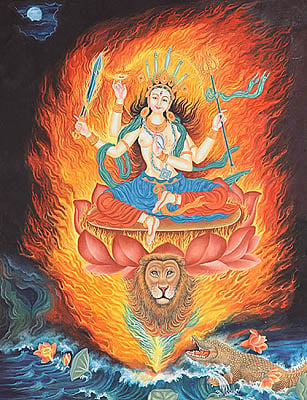
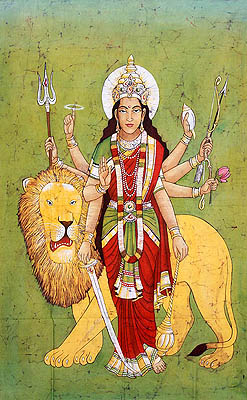
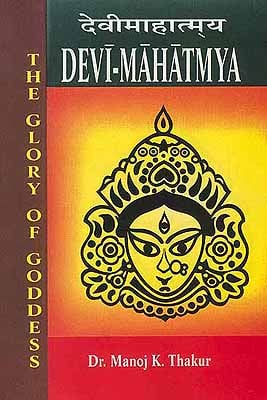
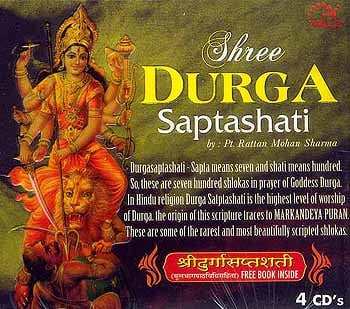
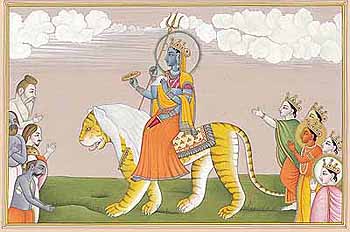
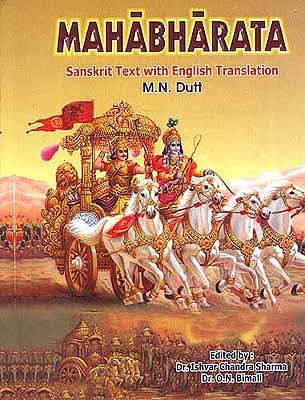
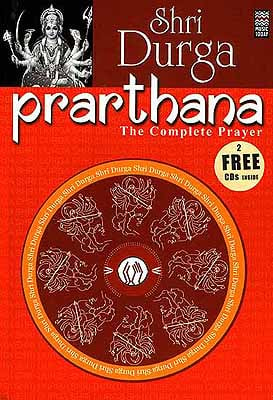
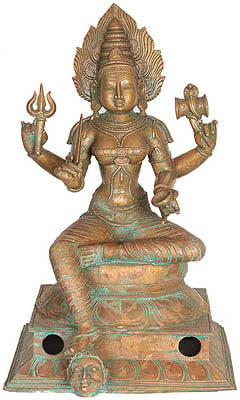
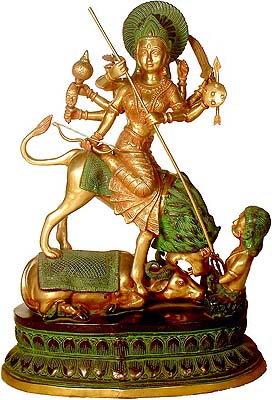
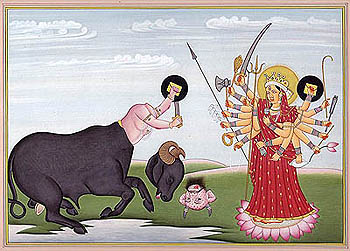
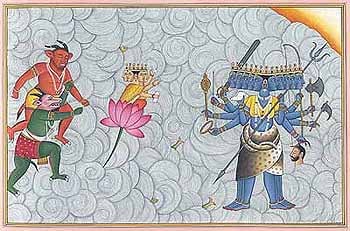
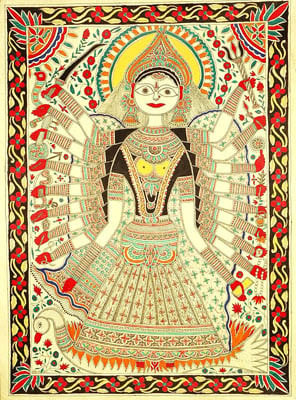
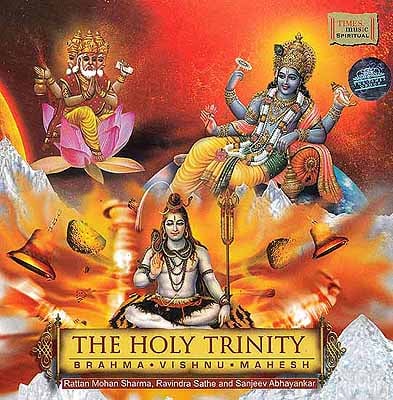
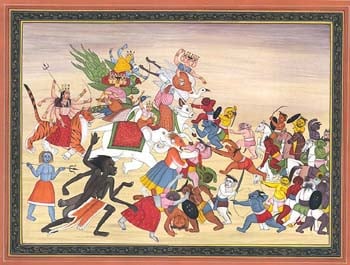
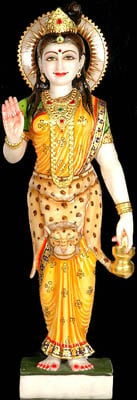
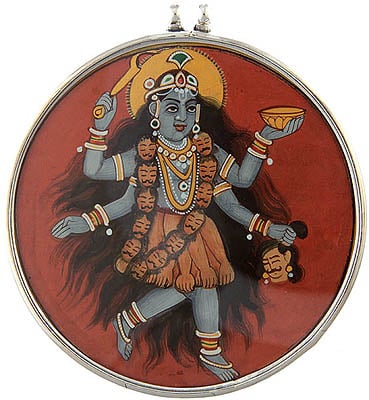
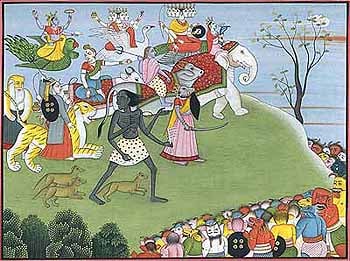
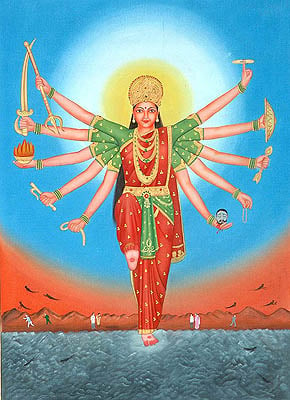
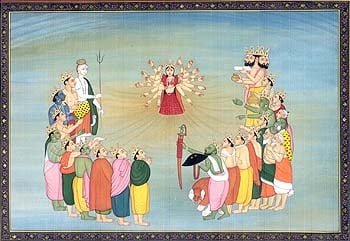
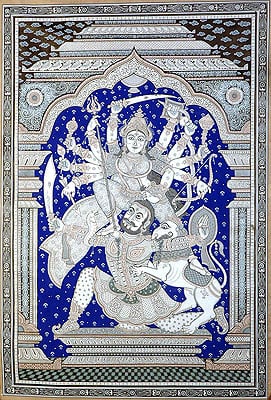
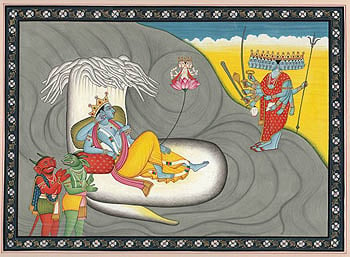
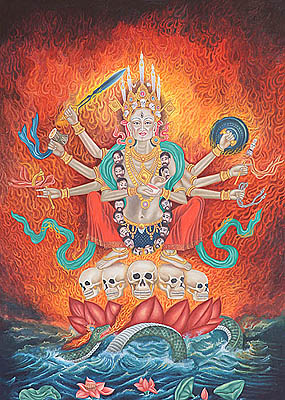
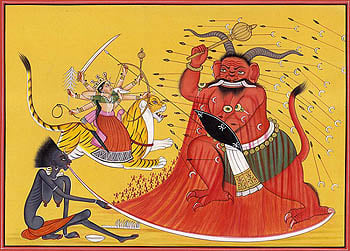
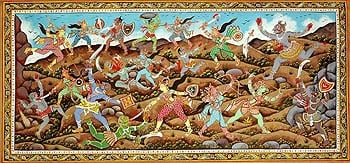

No hay comentarios:
Publicar un comentario